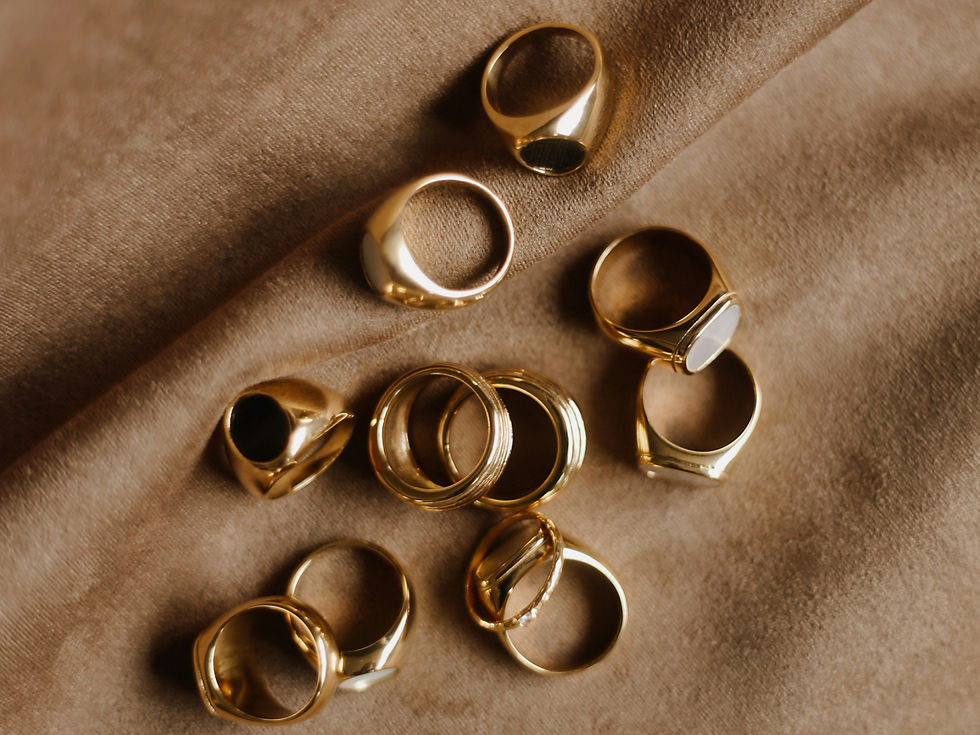Moissanites vs. Diamonds: The Ultimate Guide to Choosing the Perfect Stone
- kevdook
- Jul 1
- 3 min read
Updated: Jul 30
When it comes to selecting a stone for an engagement ring or a special piece of jewelry, few debates spark as much interest—and confusion—as the one between moissanites and diamonds. With the rise of lab-grown diamonds, the conversation has expanded even further. So what’s the fuss really about?
At Jax Goldsmith, we believe in informed choices. Here's a breakdown of the differences, advantages, and drawbacks of moissanites, natural diamonds, and lab-grown diamonds to help you decide what’s right for you or your loved one.
Understanding the Basics: What Are These Stones?
Natural Diamonds
Formed over billions of years deep within the Earth.
Composed of carbon, they are the hardest known natural material (10 on the Mohs scale).
Lab-Grown Diamonds
Chemically and physically identical to natural diamonds, but created in laboratories using high pressure and temperature or chemical vapor deposition (CVD).
Grown in a few weeks rather than over billions of years.
Moissanites (Lab-Grown)
Composed of silicon carbide, moissanite is a completely different gemstone—not a diamond or a diamond simulant.
Originally discovered in meteorites by Henri Moissan in 1893, natural moissanite is too rare for jewelry use.
All moissanites used in jewelry today are lab-grown.
How Do They Compare?
Feature | Natural Diamond | Lab-Grown Diamond | Moissanite (Lab-Grown) |
Hardness (Mohs) | 10 | 10 | 9.25 |
Brilliance (Sparkle) | Strong white light | Strong white light | More fire and rainbow sparkle |
Price | Highest | ~30–50% less than natural | Most affordable |
Environmental Impact | High (mining) | Lower than mined diamonds | Lowest |
Ethical Concerns | Possible conflict sourcing | Ethically produced | Ethically produced |
Visual Differences | Classic diamond look | Identical to mined diamond | More fiery, slightly different appearance |
Longevity | Lifetime | Lifetime | Lifetime (slightly softer, but still excellent) |

Why People Choose Moissanites
Pros:
Significantly more affordable than diamonds.
Brilliant sparkle, especially for those who love more rainbow “fire.”
Extremely durable and suitable for daily wear.
Always lab-grown, eco-friendly, and 100% conflict-free.
Cons:
Visibly different from a diamond under close inspection.
Some find the excess fire a bit "too sparkly" or unnatural.
Not a diamond, which may matter to some people sentimentally.
Why People Choose Lab-Grown Diamonds
Pros:
Identical in composition and appearance to mined diamonds.
More affordable than natural diamonds.
No mining, making them an ethical and environmentally lighter choice.
Graded and certified just like natural diamonds.
Cons:
Not rare, so less likely to appreciate in value.
As production grows, prices may continue to drop.
Some traditionalists still consider them “not the real thing.”
Why People Choose Natural Diamonds
Pros:
Seen as the traditional, timeless choice for engagement rings.
Perceived to have intrinsic value and rarity.
Often chosen for heirloom pieces and investment.
Cons:
Very expensive, especially for high-quality stones.
Environmental impact from mining is significant.
Ethical concerns still exist, especially around conflict stones.
So, Which One Should You Choose?
It really depends on your priorities:
Moissanite: Ideal if you want maximum sparkle on a modest budget and care about ethical sourcing.
Lab-grown diamond: Perfect if you want the look and feel of a diamond without the cost or mining guilt.
Natural diamond: Best if you want traditional symbolism, investment value, and don’t mind the price tag.
At Jax Goldsmith, we offer all three and are always ready to create something meaningful and unique to your taste, budget, and values. We are also able to source you whatever stones you desire.
Want to compare stones in person or explore your options? Come see us at the Ballito market or browse online at www.jaxgoldsmith.co.za. We’re here to help you make a choice that shines in every sense.




Comments